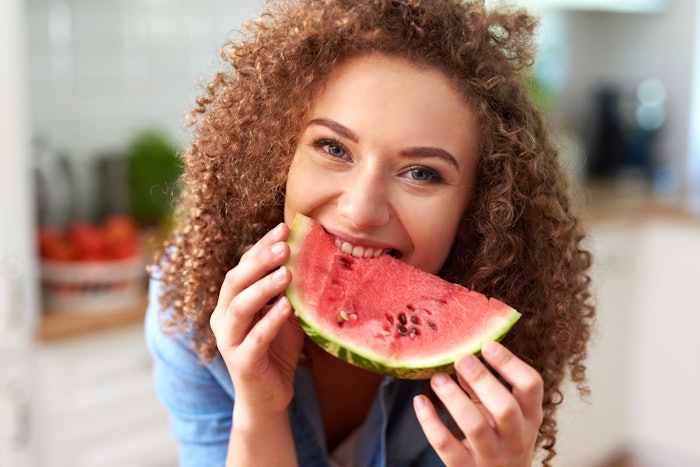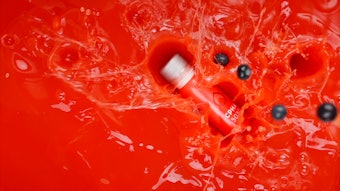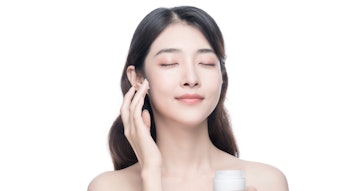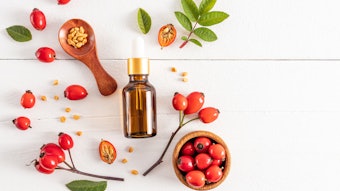
Editor's note: This article describes the skin health benefits of carotenoids and their impact on perceived beauty. Raman spectroscopy also is proposed to non-invasively measure skin carotenoid levels, offering quantifiable metrics to engage wellness consumers.
Log in to view the full article
Editor's note: This article describes the skin health benefits of carotenoids and their impact on perceived beauty. Raman spectroscopy also is proposed to non-invasively measure skin carotenoid levels, offering quantifiable metrics to engage wellness consumers.
Carotenoids are natural dietary components that provide multiple wellness benefits – supporting healthy aging and skin appearance, as well as eye, cardiovascular, brain, bone, gut and immune health, owing to their powerful antioxidant and anti-inflammatory actions.1, 2 As naturally occurring pigments in a variety of fruits and vegetables, carotenoids play a crucial role in plant health by aiding in photosynthesis and protecting against environmental stress. In humans, the antioxidant properties of carotenoids help to neutralize free radicals and reduce oxidative stress.
Interest has grown in their role for reducing age-related oxidative stress outcomes. For example, studies suggest that a higher dietary intake of carotenoids — such as β-carotene, lutein and zeaxanthin — is associated with lower biological age acceleration, meaning that individuals who consume more carotenoids may experience slower aging at a biological level.
This connection was observed in a cross-sectional study of more than 25,000 adults from the National Health and Nutrition Examination Survey (NHANES).3 A longitudinal study following 1,000 adults age 65 years and older also indicated that low plasma carotenoids were an independent risk factor for higher mortality rates among older adults living in the community.4 This could be linked to the antioxidant and anti-inflammatory properties of carotenoids contributing protective effects against aging.
This article reviews how carotenoids can support skin health, wellness and longevity through antioxidant and anti-inflammatory mechanisms. In addition, it examines how carotenoids affect skin tone, radiate a positive health status and enhance perceived beauty. Finally, it explores how Raman spectroscopy enables the non-invasive measurement and validation of carotenoid skin levels – and proposes this technique as a valuable consumer engagement tool, offering quantifiable metrics that demonstrate lifestyle impact on antioxidant status and overall wellness indicators.
Mechanisms of Action
Antioxidant properties: As is well-known, free radicals are highly reactive, unstable molecules that can cause a cascade of reactions leading to cellular damage in components such as DNA, proteins and lipids.3 These molecules are generated as byproducts of normal metabolic processes, as well as through external factors such as pollution, UV radiation and cigarette smoke.
The accumulation of free radicals leads to oxidative stress that disrupts normal cellular function, ultimately contributing to the development of various diseases including cancer, cardiovascular diseases and neurodegenerative disorders. A large body of literature links many of these factors to free radical generation creating damage on a cellular, molecular and organism level – the so-called free radical theory of aging. This theory is based on the cumulation of free radical damage over time, leading to progressive loss of functionality of the organism.5
As stated, carotenoids play a crucial role as antioxidants. By donating electrons, they neutralize free radicals, effectively stabilizing them and preventing further damage. They also protect cells against the subsequent inflammatory responses that can exacerbate tissue damage and contribute to chronic disease progression.
Thus, by neutralizing free radicals, carotenoids help to maintain the integrity of cellular structures and functions. One study even suggested that total plasma carotenoid levels could be a good biomarker of health in elderly populations.6
Immune function: Carotenoids also play a significant role in enhancing the function of various immune cells as well as gene expression related to immune functions. For example, immune cells, such as T-cells and macrophages, are crucial for identifying and eliminating pathogens, as well as orchestrating the body's immune response. Carotenoids such as β-carotene have been shown to boost the proliferation and activity of these cells, thereby strengthening the immune system.7
In terms of gene expression, data shows that carotenoids can enhance the production of cytokines and other signaling molecules.8 This modulation helps to regulate the immune response, ensuring it is effective yet controlled, thereby reducing the risk of chronic inflammation.8 Chronic inflammation is linked to various diseases, including autoimmune disorders and chronic infections, making the anti-inflammatory effects of carotenoids particularly beneficial for long-term health.
The antioxidant properties of carotenoids are also vital in protecting immune cells against oxidative damage. As stated, free radicals can cause oxidative stress and damage cellular components – including those of immune cells.8 So again, by neutralizing free radicals, carotenoids help to preserve the integrity and functionality of immune cells,8 thereby supporting overall immune health.
Carotenoids, Skin Protection and Photoaging
Carotenoids accumulate in the skin, where they can exert their protective benefits against the damaging effects9 of sun exposure that eventually manifest as visible skin aging and contribute to wrinkles, loss of skin elasticity and pigmentation changes.6 By neutralizing the free radicals induced by UV, carotenoids thereby decrease the risk of photodamage and premature aging in skin.9
One study directly demonstrated the protective effects of carotenoids in skin against UV. It showed how a carotenoid-containing nutritional and phytonutrient blend taken twice daily for eight weeks made subjects’ skin less susceptible to induced erythema than at baseline (see Figure 1).9
In addition to UV radiation, carotenoids can protect skin against environmental pollutants. Indeed, cigarette smoke, industrial chemicals and particulate matter can penetrate the skin and generate free radicals, leading to inflammation and cellular damage.10
The antioxidant properties of carotenoids can neutralize these free radicals, helping to maintain the skin's overall health and appearance while also reducing the risk of skin cancer by preventing DNA damage that can lead to malignant transformations.6, 10 Thus, the regular consumption of carotenoid-rich foods such as carrots, tomatoes and leafy greens can enhance the skin's natural defense mechanisms and contribute to long-term skin health.
Correlating Carotenoids with Skin’s Appearance
Skin tone and health status: As stated, carotenoids accumulate in the skin. Since they are a class of natural pigments in various fruits and vegetables, they can impart a yellowish hue to skin when consumed in sufficient quantities. This hue is not only a marker of dietary intake, but also has been associated with higher aerobic fitness, lower body fat, reduced stress and better sleep quality.11
The correlation between skin carotenoid levels and these health factors suggests that skin carotenoid levels are a viable measure of overall health and wellness. As board-certified dermatologist Zoe Draelos, M.D.,18 has expressed, “Lovely skin and hair are a manifestation of overall health, since the skin is perhaps the first indicator of illness.” The presence of carotenoids in the skin therefore serves as a visible cue to one's health, making it an important factor in the perception of health status and well-being.
Perceived attractiveness: Beyond health status, studies have consistently found that individuals with higher carotenoid skin coloration are deemed more attractive than even those with higher melanin skin tones.12, 13 This suggests the yellowish hue imparted to skin affects the perception of attractiveness more profoundly than skin’s natural melanin pigment. In fact, Perrett, et al., previously recommended “Fruit Over Sunbeds” – i.e., eating carotenoids over tanning in sunbeds – as a way to increase attractiveness.
The attraction to visibly carotenoid-rich skin is not merely superficial. Is speculated to be rooted in evolutionary biology, where physical traits signaling good health and nutritional status are favored in mate selection12, 13– and as noted, carotenoid skin coloration reflects underlying health, contributing to the overall perception of vitality and wellness.13
In some cultures, the appeal of a carotenoid-rich skin tone extends even further: to social acceptance. In these instances, skin coloration influenced by carotenoid intake is perceived positively, as it signals a healthy lifestyle and good nutritional status, underscoring the importance of diet in social interactions and perception.12, 13 This can additionally influence social dynamics, where individuals with carotenoid-rich skin may be viewed as more attractive and socially desirable.
Skin radiance and texture: Beyond color, additional skin attributes have been shown to improve with carotenoid supplementation. In the aforementioned study of a novel carotenoid-rich phytonutrient blend, visible improvements in radiance, texture and overall appearance were noted by a clinical grader.9
A separate study explored the effects of using a novel cleansing device system paired with a daily supplement of collagen peptides, wheat lipid extract (containing ceramides) and the carotenoid lutein. Subjects were divided into four groups:
- Placebo supplement without device
- Placebo supplement with device
- Active supplement without device
- Active supplement with device
The group that took the active supplement and used the cleansing device outperformed the others in visible attributes like skin texture, radiance and overall appearance, per clinical grading.14 This illustrates the combined effect that topical and ingestible interventions can have on skin’s appearance.
Raman Spectroscopy to Measure Carotenoids in Skin
Measuring carotenoid levels in skin presents several opportunities for product development. These range from enhancing sun protection and delivering longer-term health benefits with immediate aesthetic enhancements, to leveraging the growing demand for naturally derived, scientifically-validated actives – not to mention validating products to strengthen the beauty-from-within story.
Historically, blood tests have been the standard method for measuring carotenoid levels, offering a snapshot of recent dietary intake – especially considering carotenoids cannot be synthesized in the body. However, blood tests can be influenced by short-term dietary changes, making it challenging to obtain an accurate long-term assessment of carotenoid status.15 This limitation has prompted the exploration of alternative methods for assessing carotenoid levels in the body.
A more reliable and non-invasive method for measuring carotenoid levels in skin is Raman spectroscopy. This technology directs a laser or distinct wavelength of light at the skin that is absorbed by carotenoids due to their unique structure. The returning light is therefore different due to the loss of energy, which is quantified to provide an accurate measurement of the carotenoid concentration in skin.16, 17
Unlike blood tests, Raman spectroscopy is not influenced by short-term dietary changes, as it takes one to three months to see changes. This offers a more stable and consistent assessment of carotenoid levels in skin.16, 17 This method has been validated in various studies and is increasingly recognized for its potential in clinical and nutritional applications16 since it provides an indication of fruit and vegetable consumption, thereby demonstrating whether someone has adequate intake.
By providing a non-invasive and reliable measure of carotenoid status, Raman spectroscopy enhances the ability to monitor and improve dietary intake and overall health. For example, internal studies at the author’s company have collected Raman spectroscopy skin carotenoid scans since 2003. This database now includes 21 million scans through 2025, along with demographic data and lifestyle choices linked to these scan scores. Correlations between skin carotenoid levels and the consumption of fruits and vegetables are illustrated in this data.
Those who reported consuming six or more servings of fruits and vegetables had higher scan scores (average = 34,200 Raman Intensity Units (RIU)) than those reporting less than two daily servings (average = 28,400 RIU). Similarly, higher scan scores were seen in individuals who took a robust multivitamin mineral supplement that included carotenoids twice daily, compared to once daily (37,800 RIU vs 34,200 RIU respectively). These results were both higher than for those who did not supplement (27,500 RIU) (see Figure 2).
The relationship between other lifestyle factors is also elucidated through the database. The correlation between BMI and skin carotenoid scores can be seen. Individuals with a normal BMI have an average score of 33,800 RIU compared to 27,000 RIU for those in the obese category. And those who smoke have an average score of 24,800 RIU compared to 31,200 RIU for those who have never smoked and 25,400 for those who smoked previously but quit.
In the previously cited study of a carotenoid-rich phytonutrient blend taken twice daily for eight weeks, the scanner scores at baseline were 28,100 RIU and by the end of the study, they increased more than 10,000 RIU to reach 38,500 RIU (not shown).9 In the separate study previously described, where a supplement of collagen peptides, wheat lipid extract (containing ceramides) and the carotenoid lutein was consumed daily, skin carotenoid scores increased again by more than 10,000 RIU; starting at 28,900 and increasing to 39,700 after 120 days (not shown).14
Of note, both supplements in these studies strategically included healthy fats – either fish oils or wheat lipids – to improve the bioavailability of the carotenoids. This is an effective solution for improving the absorption of carotenoids consumed.
Conclusion
Carotenoids are natural pigments found in plants that act as powerful antioxidants, combatting aging and benefiting skin health through free radical neutralization and inflammation reduction. These natural pigments also accumulate in skin, providing UV protection and enhancing appearance with a healthy glow that correlates with fitness and wellness markers.
These connections can be precisely validated using non-invasive Raman spectroscopy to measure skin’s carotenoid levels. As shown here, such levels clearly align with positive diet and lifestyle choices.
Insights like these could be used to support evidence-based nutricosmetic development for enhanced photoprotection, anti-aging and skin health benefits. What’s more, skin carotenoid scanning could be a viable option to give consumers a snapshot of how lifestyle choices are impacting their overall well-being through antioxidant status.
Periodic scanning could additionally encourage and reinforce positive lifestyle changes, motivating consumers to continue these habits or make additional healthy choices. Thus, this important and available metric has the potential to meaningfully impact overall health.
References
1. Saini, R.K., Prasad, P., … Lee, J.H., et al. (2022, Apr 18). Carotenoids: Dietary sources, extraction, encapsulation, bioavailability and health benefits – A review of recent advancements. Antioxidants, Basel,11(4) 795.
2. Holt, E.W., Wei, E.K., Bennett, N. and Zhang, L.M. (2014, Sep 6). Low skin carotenoid concentration measured by resonance Raman spectroscopy is associated with metabolic syndrome in adults. Nutr Res.
3. Qi, X., Wang, X., … Cheng, L., et al. (2025). Dietary carotenoid intakes and biological aging among US adults, NHANES 1999 – 2018. Nutr J, 24 9; available at https://doi.org/10.1186/s12937-025-01079-8
4. Lauretani, F., Semba, R.D., … Ferrucci, L., et al. (2008, Sep). Low total plasma carotenoids are independent predictors of mortality among older persons: The InCHIANTI study. Eur J Nutr, 47(6) 335-40; doi: 10.1007/s00394-008-0732-9
5. Harman, D. (1956, Jul). Aging: A theory based on free radical and radiation chemistry. J Gerontol, 11(3) 298-300; doi: 10.1093/geronj/11.3.298; PMID: 13332224.
6. Akbaraly, T.N., Favier, A. and Berr, C. (2009, Jan). Total plasma carotenoids and mortality in the elderly: Results of the Epidemiology of Vascular Aging (EVA) study. Br J Nutr, 101(1) 86-92; doi: 10.1017/S0007114508998445; PMID: 18507882.
7. Hughes, D.A. (1999, Aug). Effects of carotenoids on human immune function. Proc Nutr Soc, 58(3) 713-8l doi: 10.1017/s0029665199000932; PMID: 10604207.
8. Bas, T.G (2024). Bioactivity and bioavailability of carotenoids applied in human health: Technological advances and innovation. Int J Mol Sci, 25 7603; available at https://doi.org/10.3390/ijms25147603
9. Wood, S.M., Mastaloudis, A.F., … Draelos, Z.D., et al. (2017, Dec). Protective effects of a novel nutritional and phytonutrient blend on ultraviolet radiation-induced skin damage and inflammatory response through aging defense mechanisms. J Cosmet Dermatol, 16(4) 491-499; doi: 10.1111/jocd.12295.
10. Baswan, S.M., Klosner, A.E., Weir, C., Salter-Venzon, D., Gellenbeck, K.W., Leverett, J. and Krutmann, J. (2021, Nov). Role of ingestible carotenoids in skin protection: A review of clinical evidence. Photodermatol Photoimmunol Photomed, 37(6) 490-504; doi: 10.1111/phpp.12690; PMID: 33955073.
11. Perrett, D.I., Talamas, S.N., Cairns, P. and Henderson, A.J. (2020, Mar 11). Skin color cues to human health: Carotenoids, aerobic fitness and body fat. Front Psychol, 11 392; doi: 10.3389/fpsyg.2020.00392; PMID: 32218759; PMCID: PMC7078114.
12. Lefevre, C.E. and Perrett, D.I. (2015). Fruit over sunbed: Carotenoid skin coloration is found more attractive than melanin coloration. Q J Exp Psychol, Hove, 68(2) 284-93; doi: 10.1080/17470218.2014.944194; PMID: 25014019.
13. Stephen, I.D., Coetzee, V. and Perrett, D.I. (2011). Carotenoid and melanin pigment coloration affect perceived human health. Evolution and Human Behavior, 32(3) 216-227; https://doi.org/10.1016/j.evolhumbehav.2010.09.003.
14. Shelly, N.H., Steve, M.W., … Robert, O’D, et al. (2021). A nutritional supplement blend of collagen peptides, lutein and wheat lipid extract improves skin attributes. JOJ Dermatol & Cosmet, 4(2) 555633; DOI: 10.19080/JOJDC.2021.04.555633
15. Smidt, C.R. and Burke, D.S. (2004). Nutritional significance and measurement of carotenoids. Current Topics in Nutraceutical Research, 2 79-91.
16. Ahn, S., Ahn, S., … Joung, H., et al. (2023, Dec 13). Validation of resonance Raman spectroscopy-measured skin carotenoid status as a biomarker for fruit and vegetable intake in Korean adults. Br J Nutr, 130(11) 1993-2001; doi: 10.1017/S0007114523001058; PMID: 37184085.
17. Udensi, J., Loughman, J., Loskutova, E. and Byrne, H.J. (2022). Raman spectroscopy of carotenoid compounds for clinical applications — A review. Molecules, 27 9017; https://doi.org/10.3390/molecules27249017
18. Draelos, Z.D. (Accessed 2025, Aug 26). Can you eat your way to healthy skin? Available at https://www.zoedraelos.com/articles/diet/










